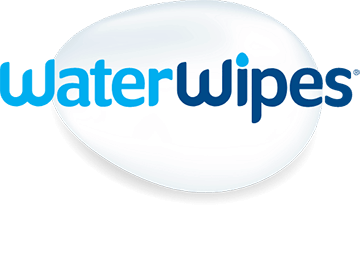What is weaning?
Weaning refers to the process of transitioning a baby from a diet of milk to solid foods. It’s an exciting milestone where babies start exploring new flavors and textures. For more information on the different stages of weaning as well as a guide on foods to try and avoid, check out our weaning tips article.
Safely preparing food
Good hygiene is paramount when preparing food for a baby. Here are our weaning tips for preparing food for your little one.
Wash your hands - Always wash your hands before preparing meals and keep surfaces clean to prevent the spread of germs. It’s recommended that you wash your hands for 20 seconds to ensure they are completely sanitized and clean. As well as ensuring your hands and surfaces are clean, you should also wash and peel fruit and vegetables.
Cut small and round foods, like grapes, into small pieces - Cut them lengthways to prevent choking. It’s recommended that foods are made small enough for your baby to easily hold – typically around an adult's finger length.
Make sure the food has cooled down before feeding it to your baby and don't reheat food more than once.
Remove any pips and stones from fruit or bones from meat and fish as these could be a choking hazard.
How to tackle a fussy eater
Working hard to provide a nutritious meal for your little one, only for it to get chucked around, is not always fun!
Alas, most babies will have fussy phases during the weaning process, but this is just another reason to enjoy eating together as a family – whatever they leave behind means more for the rest of you! (Just keep your eye on their plate to make sure it doesn’t end up on the floor first).
Like most parents, I started off with really good intentions and used to blend up superfoods like kale, and even though it tasted pretty gross, he’d eat it all with a smile on his face! That lured me into a false sense of security though as now he’s almost two, he is so much fussier. I worried at first but now I just give him a combination of the few meals he’ll eat. Children change so much that who knows, in another six months he might be keen to try whatever we throw at him
Should I refuse feeds during weaning?
Refusing could help increase your baby’s concentration on the weaning process. However, if your baby wants a feed you may do so but continue to work on distracting them with new foods and activities.
Gagging or choking during weaning
It can be scary to see your baby eating food and looking like they are choking. In most cases, they have simply triggered their gag reflex and this is completely normal.
Your baby may gag whilst adapting to solid foods and this is different from choking. If your baby is gagging you may notice they have watery eyes, they are pushing their tongue out of their mouths, or are retching to bring the food forward.
The difference between choking and gagging is that with choking, they would either be coughing uncontrollably or there will be no sound coming from your baby at all.
This is because their airways are blocked and, as the chest and ribs are pulled in, they will be struggling to breathe. There are techniques to help overcome choking such as back blows, chest thrusts, and abdominal thrusts to dislodge any objects blocking the airways. Depending on their age, the technique will vary. We recommend researching these techniques and always applying them safely.
If those all fail, call 911 immediately.
The complete weaning checklist
There are a few pieces of kitchenware and essential items you can use to ensure your little one has a positive experience while trying new foods. These include:
A high chair – Your baby needs to be in an upright position while eating - you may want to put a mat under the high chair to stop the mess going everywhere!
Bibs– You can get bibs that wipe clean or collect the food for easy cleaning.
Weaning spoons – These are normally soft enough for your baby's gums but can help them teach themselves how to use utensils.
Weaning cup – Introducing an open cup without a valve will benefit your baby as they learn how to sip. These cups usually come with two handles for easy grip and an anti-spill design.
Food on the go – As parents, it can feel like you’re constantly juggling a million things at a time, so don’t feel guilty if you need to use pre-prepared pouches or jars.
Wet wipes – In their ears, eyes, up their nose – there is no limit to the number of crevices that food will get lost in, not to mention all over your lovely floor. Weaning means food getting everywhere but wet wipes make it easy to get your baby cleaned up after a fun mealtime. WaterWipes Textured Clean wipes for Weaning are a textured wipe that have been designed for your growing baby and use a drop of fruit and berry extract for extra cleansing power.
Changes to baby's poop
Don’t be alarmed if one day your baby’s poop is one color and the next day another while weaning. This is normal as changes in color, smell, and texture can be expected as their digestive system adapts to the world of solid foods. At first, it may be thicker, darker, and smellier but will slowly begin to change as they try new things.
Baby poop guide:
Breastfed babies’ poop is typically runny and does not have a strong smell.
Formula-fed babies’ poop might be dark brown, solid, and smell.
Infant formulas can make your baby’s poop green but this depends on the formula.
It’s important to change your baby’s diaper as soon as possible as leaving it on for too long may cause your little one to feel uncomfortable or their skin to become irritated. Check out our poop chart that will help you monitor baby's stool.
How to relieve constipation while weaning
Constipation is never fun but constipation for babies is even worse as they have no way to tell you how they feel – other than with crying. If your baby is constipated after weaning, here are some ways to relieve your little one:
Increase their fluid intake – If you're still breastfeeding try to nurse them a little more or give them small amounts of water or formula throughout the day.
Feed them more fruit and vegetables – Such as plums and papaya that are high in fiber and can encourage them to poop.
Avoid constipating foods – Some foods, when eaten in high amounts, can lead to constipation. Stop feeding your baby foods like bananas, yogurt, and applesauce until they start to poop normally again.
Edie got constipated when we first started weaning her, which is apparently pretty common because their stomach is just getting used to digesting food. I looked it up and one food that’s meant to help is papaya. Suffice to say it worked so well it’s been renamed papooya in our house!
As well as constipation babies can get diarrhea too, because new things are being introduced to their digestive system. This usually is nothing to worry about, although if you ever are concerned, do speak to your doctor.
Weaning may take a while but don’t force it. Let your baby go at their own pace, stay positive, and keep praising them as you go along. Next thing you know they will be joining you at the dinner table and requesting their favorite meals.
Weaning FAQs
Can you start weaning at four months?
Yes. By the age of 4 to 6 months, most babies are ready to start the transition to solid foods, alongside breastfeeding or formula feeds. But if you start weaning your baby before they reach six months old, avoid wheat-based foods containing gluten, nuts and seeds, fish, and soft unpasteurized cheese as they could cause an allergic reaction, or contain harmful bacteria.
At what age should a baby be weaned?
When to wean your baby is a personal decision. The American Academy of Pediatrics recommends feeding baby breast milk for the first six months of their life. After that, they recommend beginning the weaning process with a combination of solid foods and breast milk until the baby is at least one year old.
How do I wean my baby off night feeding?
Most babies are usually ready to start night weaning once they reach 4 to 6 months. There are different ways to night wean, from gradual methods to cold turkey weaning, so it's important to determine the best fit for you and your baby. Most parents often start by using the gradual method of night weaning, which involves increasing feeds during the day and feeding the baby right before bedtime.
How we wrote this guide
The information in this guide is based on parental and medical information from a variety of sources including BabyCenter, Healthline and NI Direct. You can find a full list of sources used for this article below. The content on this page should not replace professional medical advice

